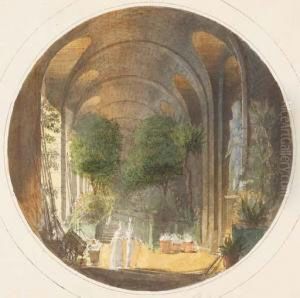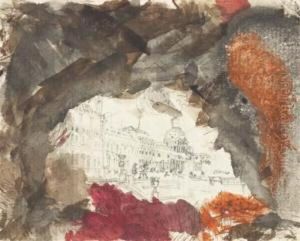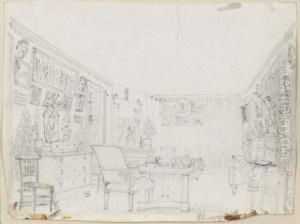Joseph Fr. Desire Thierry Paintings
Joseph François Désiré Thierry, a relatively obscure figure in the broader panorama of art history, was a French artist born in 1827. His life spanned much of the 19th century, a period characterized by profound changes in the arts, including the shift from Neoclassicism to Romanticism, followed by the emergence of Realism and the early stages of Impressionism. Thierry's contributions to the art world, while not as widely recognized as those of his contemporaries, provide insight into the rich tapestry of French artistic endeavor during this vibrant era.
Thierry received his artistic training during a time when the École des Beaux-Arts in Paris was the epicenter of artistic education in France. Although specific details of his education are scarce, it is likely that he was exposed to the academic painting style that dominated French art at the time, emphasizing classical themes, technical precision, and a polished finish. Throughout his career, Thierry worked within the conventions of his time, but like many artists of the period, he may have been influenced by the growing interest in depicting more naturalistic and everyday subjects, a hallmark of the emerging Realist movement.
Despite the lack of widespread fame, Thierry's works contribute to our understanding of the 19th-century French art scene. His paintings, possibly including landscapes, genre scenes, and portraits, would reflect the artistic trends and societal interests of his time. However, due to the scarcity of records, Thierry's specific contributions and the extent of his oeuvre remain somewhat enigmatic, highlighting the challenges of art historical research, especially concerning artists who did not achieve significant fame or recognition.
Joseph François Désiré Thierry died in 1891, leaving behind a legacy that, while not extensively documented, offers a glimpse into the rich diversity of 19th-century French art. His career underscores the importance of acknowledging and studying lesser-known artists to gain a fuller understanding of the historical and cultural context of the art world during their lifetimes.



